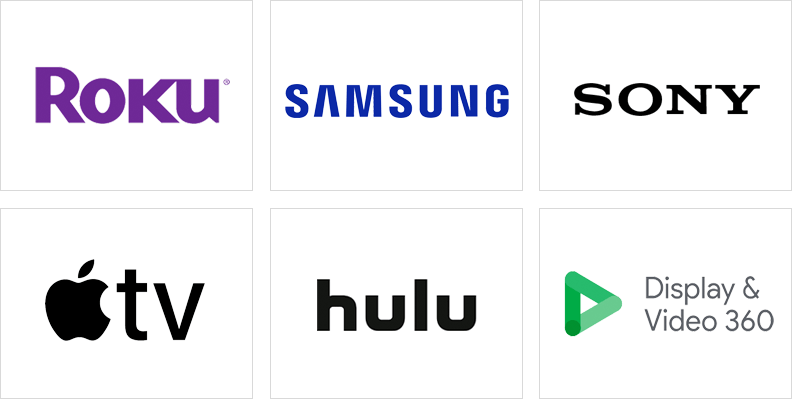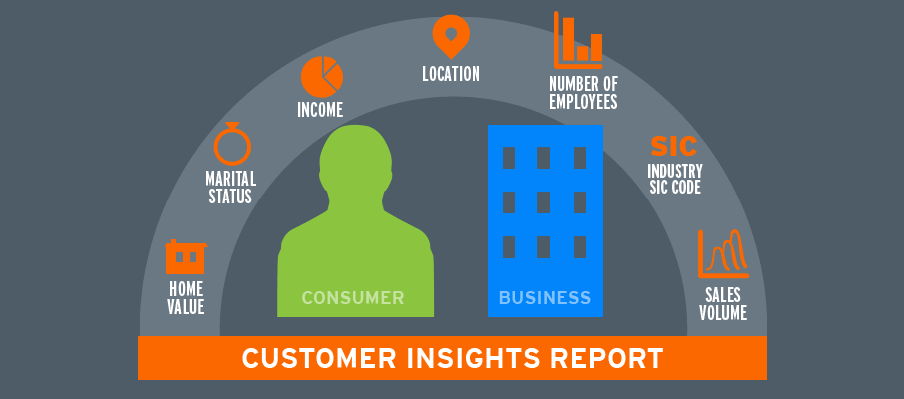More and more people are choosing to stay home and be entertained. According to Statista, Home Entertainment revenue is projected to continue growing over the next five years, resulting in an estimated projected market volume of roughly $3.88B!
This is good news for small businesses like yours, who are looking for new and effective ways to advertise and reach your target audience! Because while other forms of advertising still have merit, Connected TV advertising is quickly catching up.
Luckily, it’s still somewhat “early days” for this form of advertising, making now the perfect time to give it a try.
Read on to find out what Connected TV Advertising is, how it works, and why it’s an advantageous form of advertisement for small businesses like yours.
What is Connected TV Advertising?
Connected TV (CTV) advertising is a new way for small businesses to reach their target audiences. CTV allows businesses to place ads on streaming platforms like Roku and Amazon Fire, reaching viewers who are watching shows on these platforms. This type of advertising is effective because it allows businesses to target their ads to specific demographics and interests.
When you ask, what is CTV advertising, it boils down to being an emerging advertising trend which is expected to grow in popularity in the coming years. This type of advertising is still in its early stages, but there are already a number of platforms that offer CTV ad space. These platforms include Roku, Amazon Fire, and Apple TV.
One of the benefits of CTV advertising is that it allows businesses to target their ads more effectively. For example, businesses can target ads based on demographic information like age, gender, and location. They can also target ads based on interests, which allows them to reach viewers who are more likely to be interested in their product or service.
Another benefit of CTV advertising is that it is less expensive than traditional television advertising. CTV ads can be purchased on a cost-per-impression (CPI) basis, which means that businesses only pay for their ad when it is seen by a viewer. This makes CTV an affordable option for small businesses that want to reach their target audience without breaking the bank.
Popular CTV ad platforms
Now that you better understand what is connected tv advertising for small businesses, you may want to learn more about where you can place your ads. Today’s advertisers have a variety of tools and platforms available to them for Connected TV advertising. Here are some of the most popular ones:

- Roku Advertising Platform: Advertisers can create video or display ads that target specific audiences on Roku devices.
- Samsung Ads: Samsung’s Connected TV platform provides advertisers with the ability to target consumers with ads based on their viewing habits and interests.
- Sony Smart Ad Solutions: Sony’s platform allows advertisers to deliver interactive, personalized ad experiences to viewers on Sony smart TVs.
- Apple TV Advertising Platform: Advertisers can create ads in place on the Apple TV platform to target viewers using device or household targeting.
- Hulu Ad Manager: This is a self-service platform where advertisers can upload and manage their Connected TV campaigns. It includes powerful tools to analyze performance data and optimize spend.
- Google DV360 & YouTube Ads: This provides access to the entire inventory of Connected TV devices, including both traditional linear channels and streaming platforms, to enable cross-platform reach for audience segments.
Setting up CTV ads for SMBs
There are two main types of Connected TV ads: in-stream and out-of-stream. In-stream ads are inserted into the content that viewers are watching, similar to a traditional commercial break. Out-of-stream ads appear on the screen before or after the content is viewed, similar to an ad that might appear on a website.
As a small business owner, you may be wondering how to get started with connected TV advertising. Here’s a step-by-step guide to setting up connected TV ads for your small business:

1. Determine your budget for connected TV advertising
Like any other marketing campaign, you’ll need to determine how much you’re willing to spend on connected TV ads. Keep in mind that CTV ad rates are typically higher than other digital ad formats, so you’ll need to factor this into your budgeting decisions.

2. Choose the right platform for your CTV ads
There are a few different platforms that offer CTV advertising, so it’s important to choose one that will work best for your business goals. Some popular CTV platforms include Roku Ads, Comcast Xfinity On Demand, and Amazon Fire TV.

3. Create compelling creative for your connected TV ads
Once you’ve decided on a platform, it’s time to create the actual ads that will appear on screen. Make sure your creative is engaging and effective—consider using video, animation, or other visuals to grab the viewer’s attention.

4. Set up an ad campaign on your chosen platform
Each platform requires a slightly different setup process, but in general, you’ll want to specify the demographics of the viewers you want to target and the types of content that your ad should appear before or after (for example, sports shows or news programs). You’ll also need to determine how much you’re willing to spend per impression and how long you’d like your campaign to run for.

5. Track and analyze your results
As with any other digital advertising campaign, it’s important to track and measure the performance of your CTV campaigns over time in order to get an understanding of which strategies are working best for you. Some platforms offer their own performance tracking tools, while other platforms may require third-party solutions such as Google Analytics.
Measuring the success of your CTV ads
As a small business, you may be wondering how to measure the success of your connected TV (CTV) ads. While CTV advertising is still in its early stages, there are a few ways to gauge its effectiveness.
One way to measure the success of your CTV ads is by looking at reach and frequency. Reach is the number of unique viewers who see your ad, while frequency is the average number of times each viewer sees your ad.

To calculate reach and frequency, you’ll need to track impressions, which are the number of times your ad is served on a CTV platform. You can also look at engagement metrics, such as click-through rate (CTR) and video completion rate (VCR). CTR measures how often viewers click on your ad, while VCR measures how often they watch your ad all the way through.
Another way to measure the success of your CTV ads is through brand awareness and consideration metrics. You can track brand awareness with surveys or polls that ask viewers if they recognize your brand after seeing your ad. Brand consideration measures whether or not viewers are more likely to consider using your product or service after seeing your ad.
Lastly, you can also look at sales data to see if there’s been an uptick in purchases since running your CTV campaign. This could be either online sales data or in-store sales data, depending on where you’re selling your product or service.
Pitfalls SMBs should avoid with CTV ads
There are a few common mistakes that small businesses often make when launching their first connected TV ad campaigns. Here are some things your SMB should NOT do:
1. Not Defining Your Target Audience
When you launch your ad campaign, be sure to have a clear idea of who your target audience is. This will help you create ads that are relevant and engaging for them.
2. Not Creating Compelling Ads
Your ads should be compelling and offer value to your audience. Otherwise, they’ll simply tune out your message.
3. Not Measuring Results
Connected TV advertising allows you to measure the results of your campaigns in real-time. Be sure to take advantage of this by tracking key metrics like reach, frequency, and completion rates.
At Salesgenie we have seen over a 96% growth within the CTV industry. Advertisers are recognizing the opportunity in this growing space and are adjusting their business plans to capitalize on it. To do so, they are turning to us for guidance to get the most out of their CTV investment—and you can, too.






